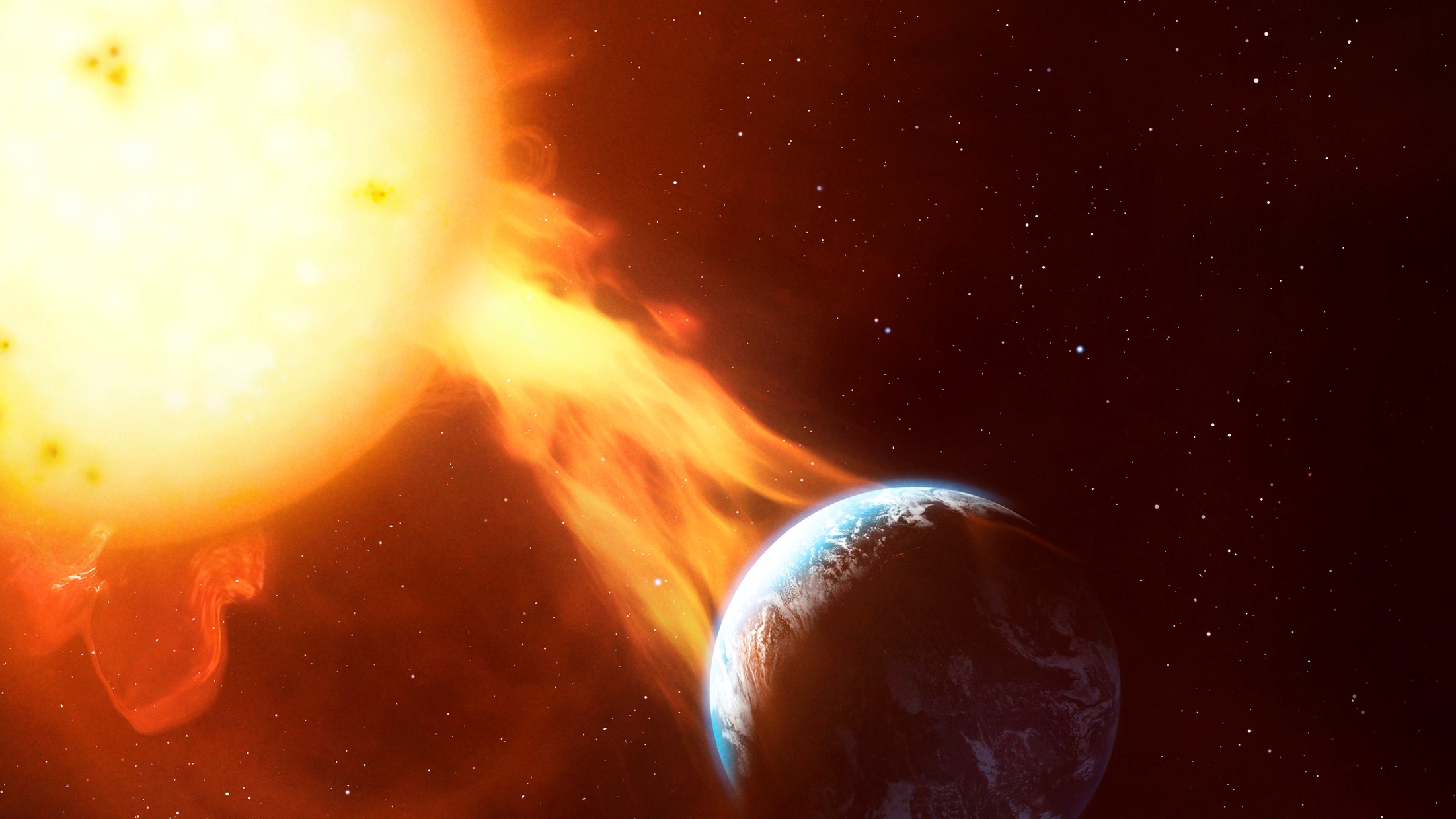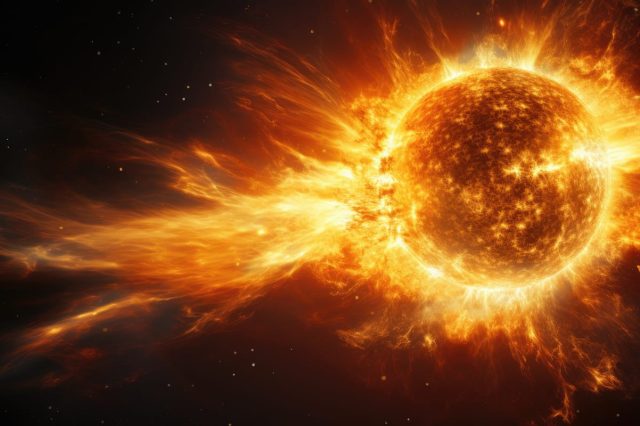The Carrington Event is one of the most fascinating and awe-inspiring events in the history of space weather. Named after the English astronomer Richard Carrington, who observed the solar flare that triggered it, the Carrington Event is the most powerful solar storm ever recorded. It occurred in September 1859, a time when the world was still largely dependent on telegraphy and the telegraph network was rapidly expanding. The Carrington Event had a profound impact on the Earth's magnetic field, causing auroras to be seen as far south as the Caribbean and sparking electrical fires in telegraph equipment around the world. In this article, we'll take a closer look at 10 fascinating facts about the Carrington Event and its impact on our planet.
Have you ever heard about the so-called Carrington Event? Do you know what it was, when it took place? If the answer is no, and you want to find out more about the greatest solar storm to impact our planet, continue reading below.
Solar flares, the most powerful explosions in our solar system, are fierce bursts of plasma and radiation linked to sunspots, as described by NASA. When magnetic energy accumulates on the sun and is suddenly discharged, solar flares are unleashed.
Frequently, solar flares coincide with the release of enormous solar material bubbles called coronal mass ejections (CMEs). These ejections may hold billions of tons of plasma – electrically charged particle clouds – that can travel at incredible speeds of millions of miles per hour, as reported by NASA.
As per Live Science, during 2021 research, scientists calculated that the radiation from the Carrington flare likely possessed about 4 X 10^32 ergs of energy, which is equivalent to roughly 10 billion 1-megaton nuclear bombs. Scientists estimated that the event’s CME likely contained about 3 X 10^32 ergs of kinetic energy.
The Carrington Event set off a geomagnetic storm on Earth, as highlighted in the 2021 study. The explosion likely ejected a coronal mass ejection that bombarded our planet with high-velocity waves of scorching plasma clouds, containing powerful magnetic fields. When such bursts collide with Earth’s magnetosphere – a protective layer around the planet that contains plasma held by Earth’s magnetic field – this plasma can travel along the planet’s magnetic field lines and collide with molecules in Earth’s atmosphere, producing auroras.
The Carrington Event: 10 Facts About History’s Greatest Solar Storm
A Solar Storm for the Ages
In 1859, Earth experienced the most powerful solar storm in recorded history, known as the Carrington Event. This listicle delves into the extraordinary details of this remarkable event, from its discovery to the potential consequences if a similar storm occurred today.
1. The Discovery: Richard Carrington’s Observations
On September 1, 1859, amateur astronomer Richard Carrington observed a series of intense solar flares on the sun’s surface. These flares would go on to trigger the powerful geomagnetic storm that now bears his name.
2. The Aurora Borealis: A Spectacular Light Show
The Carrington Event produced dazzling auroral displays, visible as far south as the Caribbean and Hawaii. Witnesses reported being able to read newspapers by the light of the aurora alone, highlighting the extraordinary brightness of this natural phenomenon.
Astrophotographer Captures 1.6 Million-Kilometer Plasma Plume Erupting From the Sun
3. Global Telegraph Disruptions: A World in Shock
The geomagnetic storm caused by the Carrington Event wreaked havoc on telegraph networks worldwide. Operators received electric shocks, telegraph paper caught fire, and some telegraph systems continued to function even after being disconnected from their power sources.
4. The Science Behind the Storm: Coronal Mass Ejections
The Carrington Event was caused by an immense coronal mass ejection (CME) from the sun. This CME sent a stream of charged particles and plasma hurtling toward Earth, resulting in a severe geomagnetic storm that disrupted the planet’s magnetic field.
5. The Speed of the Solar Storm: Record-Breaking Velocity
The CME that triggered the Carrington Event traveled at an astonishing speed, reaching Earth in just 17.6 hours. This is significantly faster than the typical CME, which can take anywhere from two to four days to reach our planet.
6. The Impact on Modern Society: A Sobering Prospect
If a solar storm of the Carrington Event’s magnitude were to occur today, the consequences would be far more severe. Our modern, interconnected world relies heavily on technology and electrical systems, which would be extremely vulnerable to a powerful geomagnetic storm.
7. The Potential Damage: Power Grids and Satellites at Risk
A Carrington-like event today could cause widespread power outages, crippling communication networks and GPS systems. Satellites, upon which air traffic control relies, would be severely impacted, creating a cascade of failures that would devastate our daily lives.
Largest Solar Telescope on Earth Reveals Close-Up Images of the Sun
8. The Economic Cost: A Multitrillion-Dollar Disaster
The potential economic fallout from a modern-day Carrington Event is staggering. Estimates suggest that the cost could reach as high as $2 trillion in the first year alone, with recovery taking anywhere from four to ten years.
9. Preparedness and Mitigation: Averting a Catastrophe
Governments and organizations worldwide are working to improve our understanding of space weather and develop strategies for mitigating its effects to minimize the potential impact of a future Carrington-level solar storm. This includes developing early warning systems and hardening infrastructure better to withstand the onslaught of a powerful geomagnetic storm.
10. Learning from the Past: The Carrington Event as a Cautionary Tale
The Carrington Event serves as a sobering reminder of the sun’s power and the potential consequences of extreme space weather. By studying this historic event, we can better prepare for future solar storms, protecting our modern society from the potentially devastating effects of a similar event.
Conclusion: The Carrington Event’s Lasting Legacy
The Carrington Event remains the most powerful solar storm in recorded history, leaving a lasting impression on both the scientific community and the public imagination. By understanding the details of this extraordinary event, researchers can better prepare for and potentially mitigate the impact of future solar storms on our increasingly technology-dependent world.
The Carrington Event’s lasting legacy has highlighted the importance of studying solar activity and underscored the need to invest in infrastructure and technology capable of withstanding potential geomagnetic disturbances. As our reliance on electrical and communication systems continues to grow, so does the urgency to protect these vital networks from the potentially devastating effects of a solar storm on a similar scale. In a world where we are set to rely ever more so on the Sun’s energy to run our world, understanding our star is of the essence.


